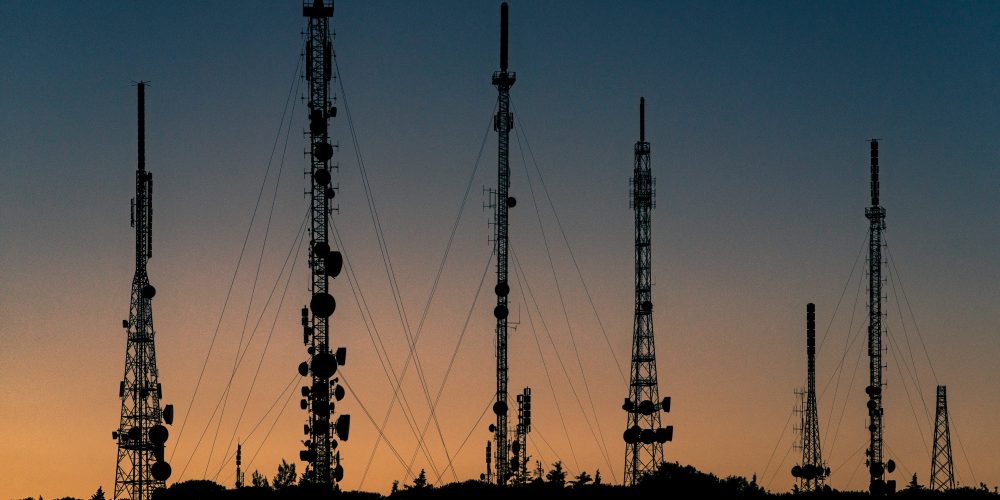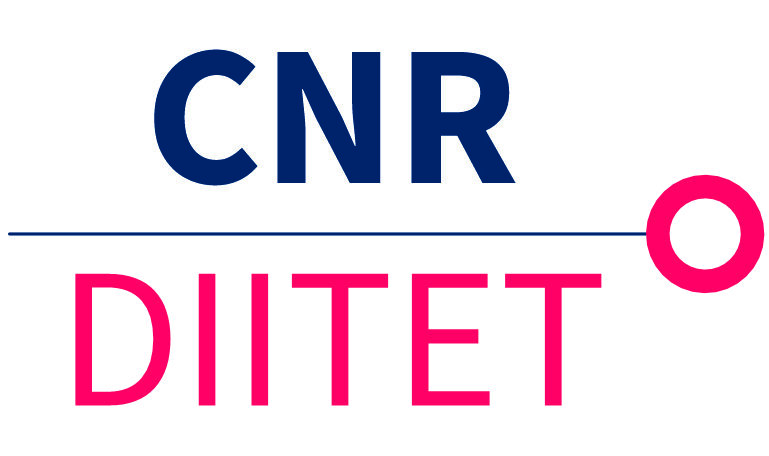
A) Purposes and Objectives
The strategic area "Systems and Communications Engineering" is a macro scientific sector that includes research in the fields of electronics, communications, optics, electromagnetic fields and systems engineering. With reference to the ERC panels, it covers the research topics of the entire sector PE7 "Systems and Communication Engineering ".
The main objective of this project area is to expand and promote research in the manufacturing industry and present itself as a research pole in relation to the industrial world, bringing the research world closer to industrial needs. The area has scientific and informational purposes in the field of information processing systems with methods and technologies that cover all aspects related to a processing system, hardware and software, operating systems, computer networks, databases and information systems, programming languages, software engineering, person-computer interaction, signal and image recognition, multimedia processing, document and process management, languages and techniques web search, digital library management systems and information retrieval on a document basis, knowledge engineering, artificial intelligence and robotics. The competences related to the design and implementation of IT systems and various applications of the processing systems, such as integrated systems (embedded) and pervasive systems, i.e. systems in which the processing of information is integrated transparently into the objects of use, fall within the scope of common daily activities.
The area is also interested in scientific activities in the field of communications. In the given context the purpose is planning, design, implementation (hardware and software) and the operation of equipment, systems and infrastructures for applications aimed at: the transfer of signals via cable (copper or fiber), via radio (terrestrial or satellite) or other means of propagation, with the use of specific technologies such as optical and mobile communications; to the treatment of mono/multidimensional signals for the purpose of filtering, reduction of redundancy, synthesis, extraction of information elements; the recognition of forms for the semantic interpretation of the information content of signals and images; interconnection in the network for the transport of information and for the use of interactive/distributive services, in the context of applications such as telematics; remote sensing for the location/identification of fixed/moving objects in air/sea/land traffic control and environmental monitoring. Given the heterogeneity of the area, studies are also carried out on methods and technologies for the treatment of information aimed at the management and automatic and real-time control of systems, processes and dynamic systems in general, with applications that embrace different areas of the engineering. The integrated approach between engineering and automatic systems allows to unify the design methods to give forms of intelligence to artificial systems that ensure programmed behaviors, adaptability to changed environmental conditions, self-diagnosis of faults and restoration of normal operating conditions without human intervention or human service. These competences are joined by those with the most relevant technological content, concerning, for example, devices and equipment for the implementation of control (actuators), sensors and processing of sensory data, human-machine interfaces, robotics and mechatronics. Ultimately, we highlight the scientific activities concerning electromagnetic fields, in which the studies on free and guided propagation are relevant, on the design and characterization of circuits and antennas, together with the analysis of electrodynamics, radiation and diffraction problems. Propagation studies are directed towards the characterization of the transmission channel for fixed and mobile communications, for components and optical systems. The design of passive, active circuits and very high frequency antennas requires the study of very complex situations, constituting the field of microwave and millimeter wave components and circuits and systems. Similar considerations apply to optical and photonic circuits and technologies. Detection using electromagnetic fields finds numerous applications. The best known is the observation of the earth through radar, lidar and radiometric systems, fundamental for the applications of environmental diagnostics, as well as in aeronautical and aerospace applications. Other important applications concern biomedical diagnostics and electronic systems and materials in civil and industrial environments, as well as the characterization of complex environments in logistics and "safety & security" applications. The interactions between electromagnetic fields and biological systems find protectionist and biomedical applications interesting. Finally, other activities of the sector are aimed at the development of artificial materials (metamaterials) for electromagnetism applications, as well as techniques for the analysis and design of micro and Nano-electrically driven structures for nanotechnology and/or biomedical applications.
B) Scientific Technical Content
The summary contents presented below shows the technical-scientific activities of this strategic area, divided into 13 project areas. It indicates the involvement of all the Institutes involved in the Department and a work force mainly specialized in Computer Science and Information Engineering, Mathematical Sciences and Materials Sciences and Technologies. The overall picture of the project areas related to the "Systems and Communications Engineering" strategic area with the list of participating Institutes are shown in the table in the paragraph presenting the strategic priorities.
The development of new components and systems combines several activities, including the formulation of concepts, analysis, modeling, design, production, integration and testing. These principles are implemented for three main areas, namely photonics, microwave and millimeter wave technologies and devices, and micro and nanoelectronic technologies. Production and performance evaluation are conducted in high-tech laboratories. Depending on the specific technological maturity, the activities are carried out within programs financed by agencies (European Commission, European Space Agency, Italian Space Agency, Fusion for Energy, MISE, MIUR) for fundamental research and industrial contracts with national companies. The aim of this area is to enhance the development of new components and technologies available for ICT applications, including next-generation 5G terrestrial and satellite networks, the Internet of Things (IoT), Earth observation, environmental monitoring, facilities diagnosis of civil and cultural heritage, Industry 4.0, automotive, wellness and health care. Researchers in this area participate in network agencies and committees, to contribute to the roadmaps and strategic agendas that define the activities to be implemented in the future, which are: digital production of microwave/millimeter wave products; flexible electromagnetic monitoring and testing using UAV-based RF systems; active circuits implemented with the latest device technologies ( GaN , pHEMT , mHEMT ); gyrotron with dummy loads with powers up to a few MW (2 or more) in CW; GPR systems that exploit new observation platforms (UAV); consolidation of imaging systems THz; nanofiber sensors polyanilines, magneto-optics, Si-integrated and nanoelectronic magnets; Interface between human and cerebral signaling for the optimized direct control of devices, prostheses and health status. Further research activities in this area follow four main themes. Research aimed at designing, developing and evaluating ICT and engineering solutions for diagnosis and therapy in medicine should also be reported. To this end, scientific activities are carried out by applying engineering to biological systems and biomedical technologies, involving extremely different skills: bioengineering, applied electronics, applied electromagnetism and microwave, computational biology, bio-modeling and control systems, systems engineering and communications, information theory, pervasive and mobile computing, artificial intelligence and data analysis, robotics and virtual/augmented reality. Other issues have been identified on which health engineering research will have to invest in the near future. These include service robotics, technologies for the protection of health and the environment, modeling and the computational approach to medicine, the tools and equipment necessary for the progress of diagnosis and therapy and technologies for the management of health systems. In line with this trend, the research carried out in this field can be summarized as follows:
- Digital solutions for health throughout life (DIGHEALTH);
- Robotic service (S-ROB);
- Environmental and social health (ENVHEALTH);
- Silicon models for health (MODEL-H);
- Instruments, technologies and devices for diagnosis and advanced therapies (HTECH);
- Tools for personalized medicine (T-PERMED);
- E- Health systems and health care (E-HEALTH).
Aerospace and land observation have always played a fundamental role in the DIITET. The CNR is accredited by specific sector studies at levels of international scientific excellence in the field of remote sensing. Many Institutes are involved in several projects concerning the exploration of space and aeronautics. The research carried out in this project area concerns the development of numerous technologies, classified as upstream and downstream, dedicated to the exploration of space and land. The first concerns the sending of objects in space and the exploration of space, which orient the supply of technology. The latter concerns a series of different applications, such as satellite transmission services and earth observation, which guide the development of algorithms and methodologies. Activities include space security, space exploration technologies and space communications, aeronautics and navigation, earth observation technologies and ICT tools. With reference to earth observation, the skills are broad and cover sensors that operate from the optical band up to microwaves and gamma rays of cosmic origin, electromagnetic modeling and statistical data analysis with ICT technologies and infrastructures for their management, processing and representation.
C) Research infrastructures
There are numerous research infrastructures that refer to the activities of this area. For example:
- "SoBigData" - the European research infrastructure for Big Data and Social Mining;
- "E- RiHS" (European Research Infrastructure for Heritage Science), "ARIADNE", "DARIAH ERIC", "PARTHENOS", European research infrastructures for cultural heritage sciences;
- "EPOS" (European Plate Observing System), a pan-European ESFRI research infrastructure in the field of solid earth sciences. EPSOS is currently being implemented (EPOS IP) and is expected to be completed in 2019. Within EPOS IP the researchers of DIITET are responsible for the WP12 "Satellite Data" which develops the satellite component of EPOS.
D) Financing Sources
The thematic areas and the project proposals related to the strategic area "Systems and Communications Engineering" find correspondence in the areas of the Horizon 2020 program "Industrial Leadership" (Leadership in Enabling and Industrial Technologies - LEIT) and "Social Challenges" (Societal Challenges), from which derive the majority of funding, followed by the use of national and regional funds (PON Research and Competitiveness and regional POR), revenues deriving from contracts with the national industry in the industrial sectors of reference for this area.


